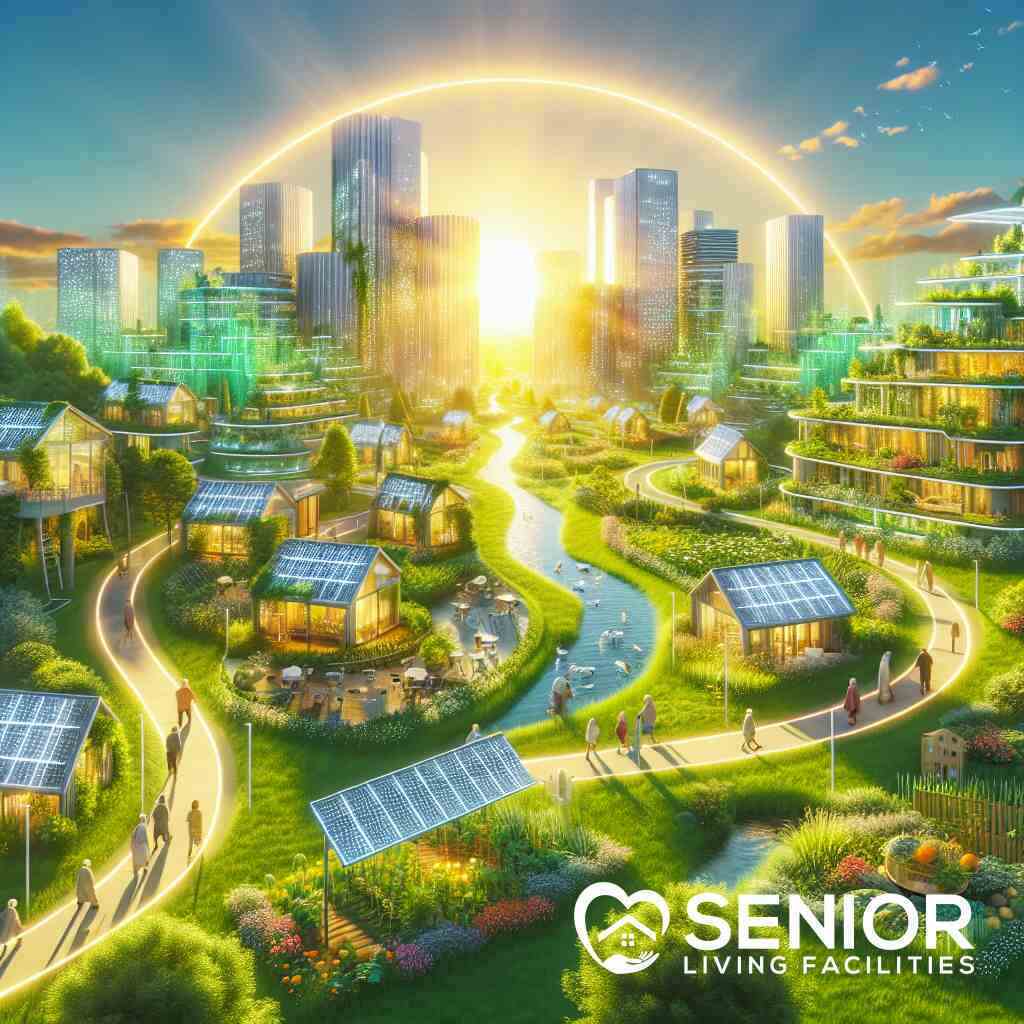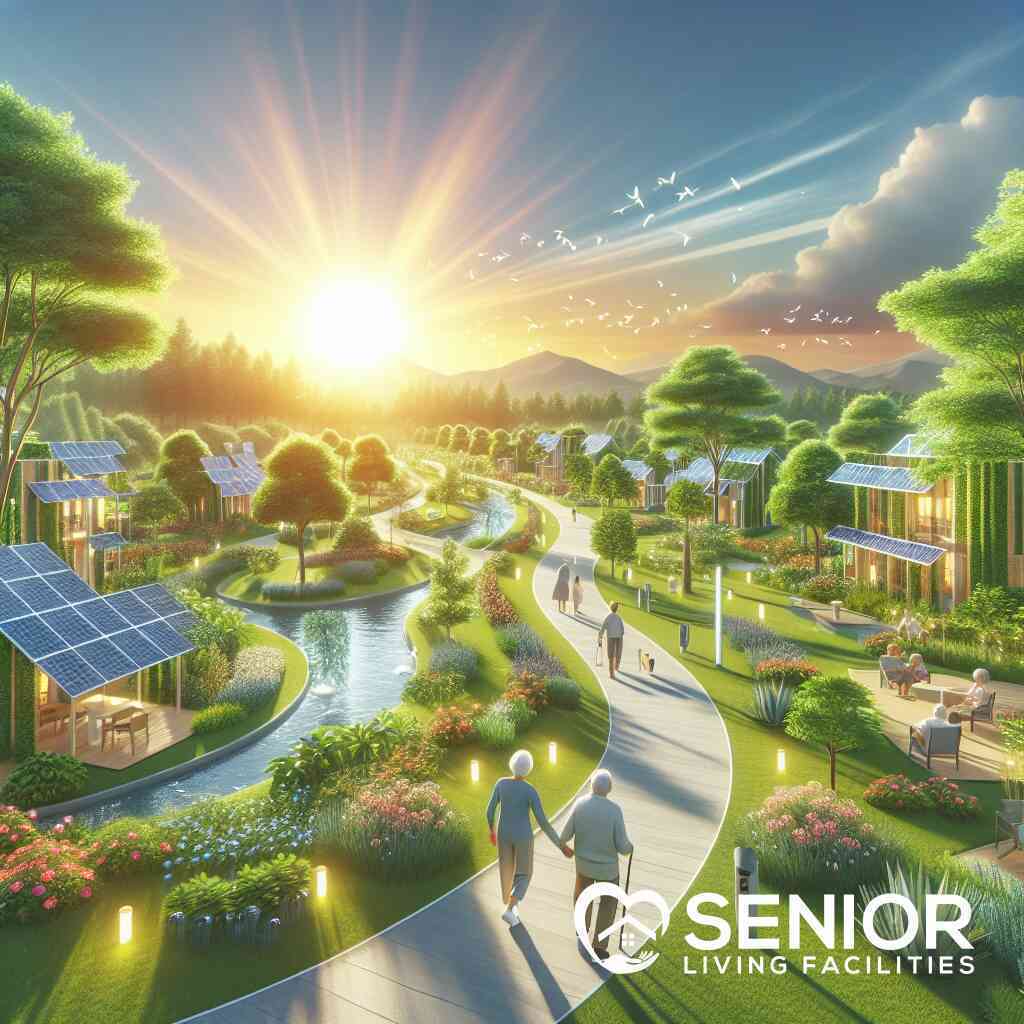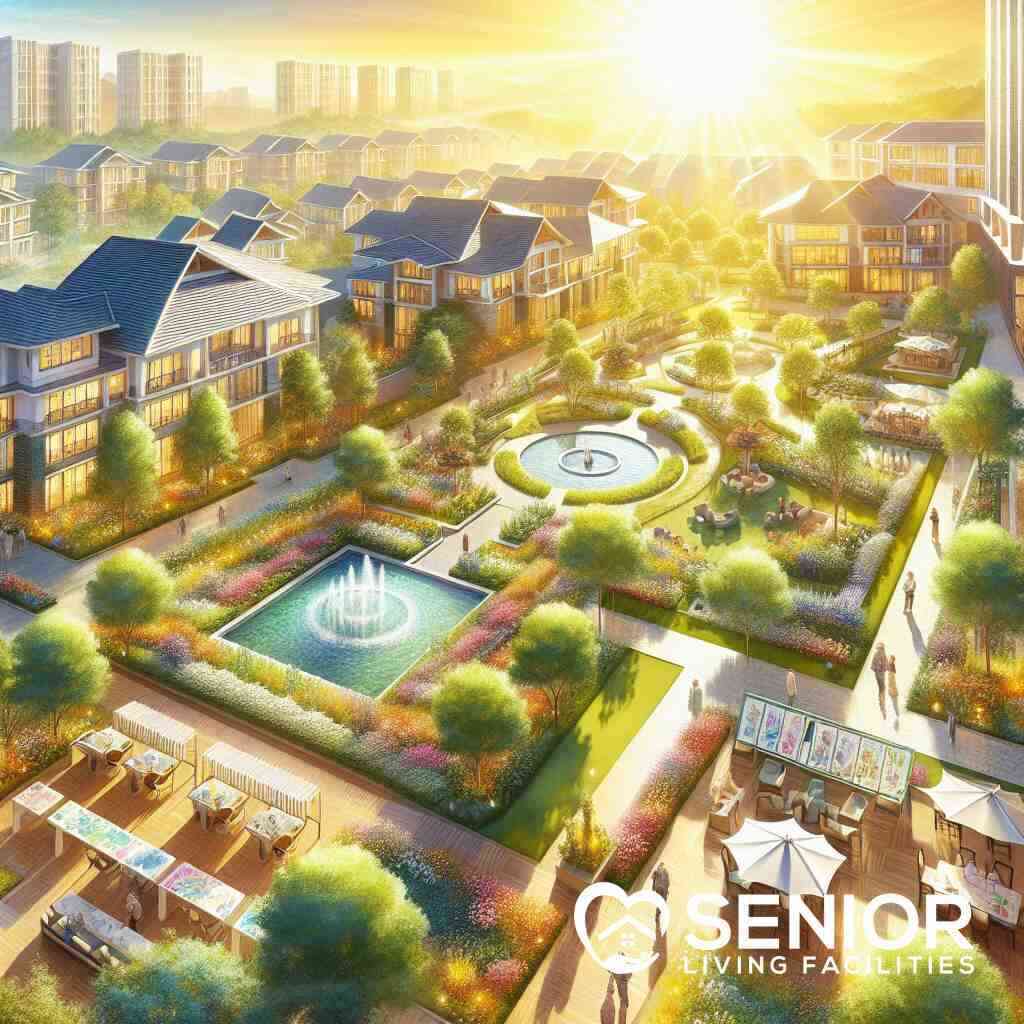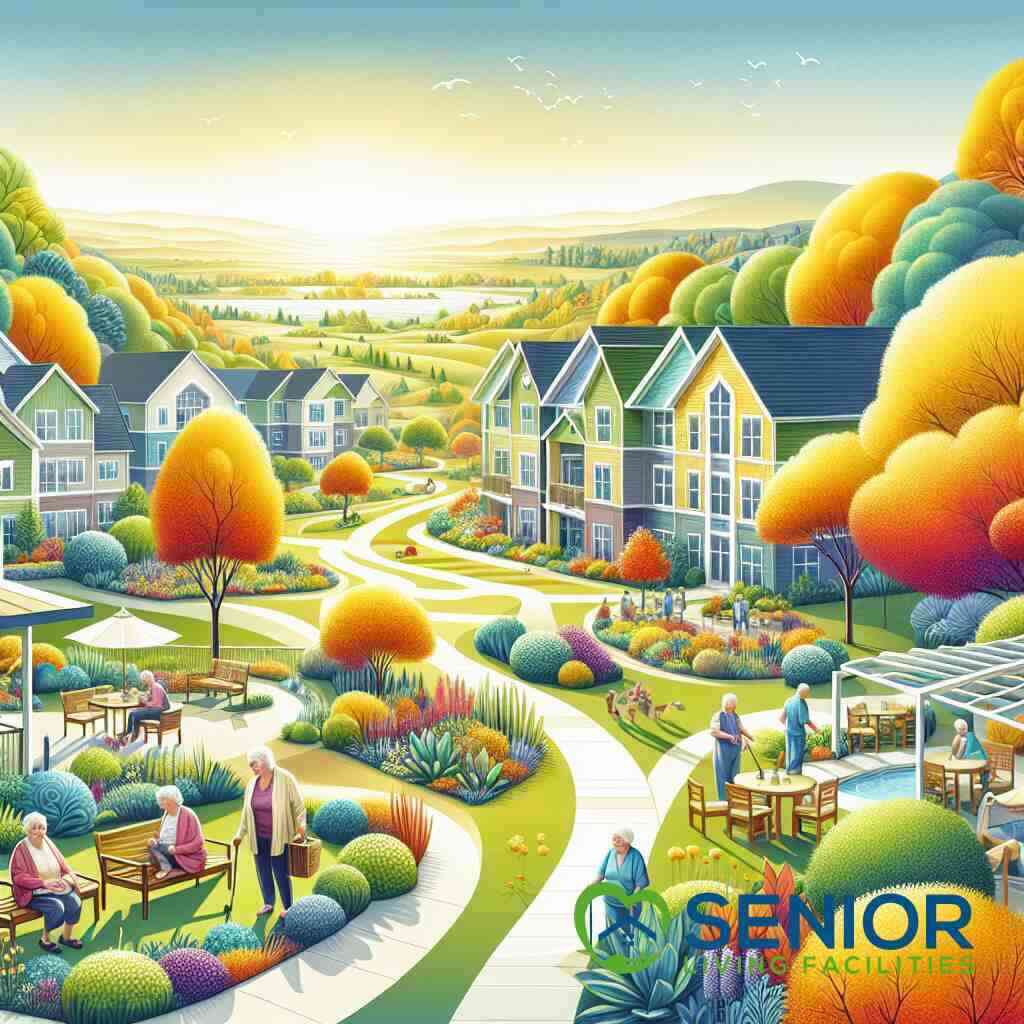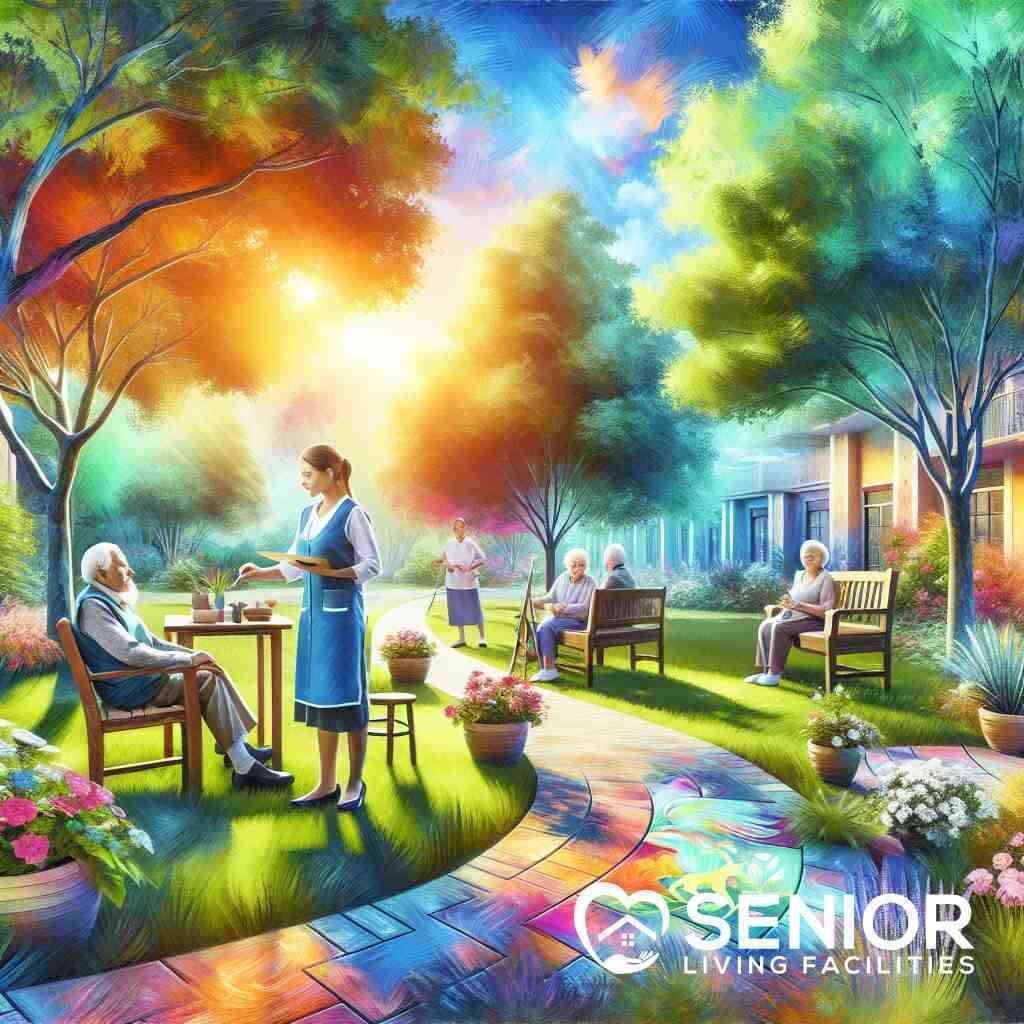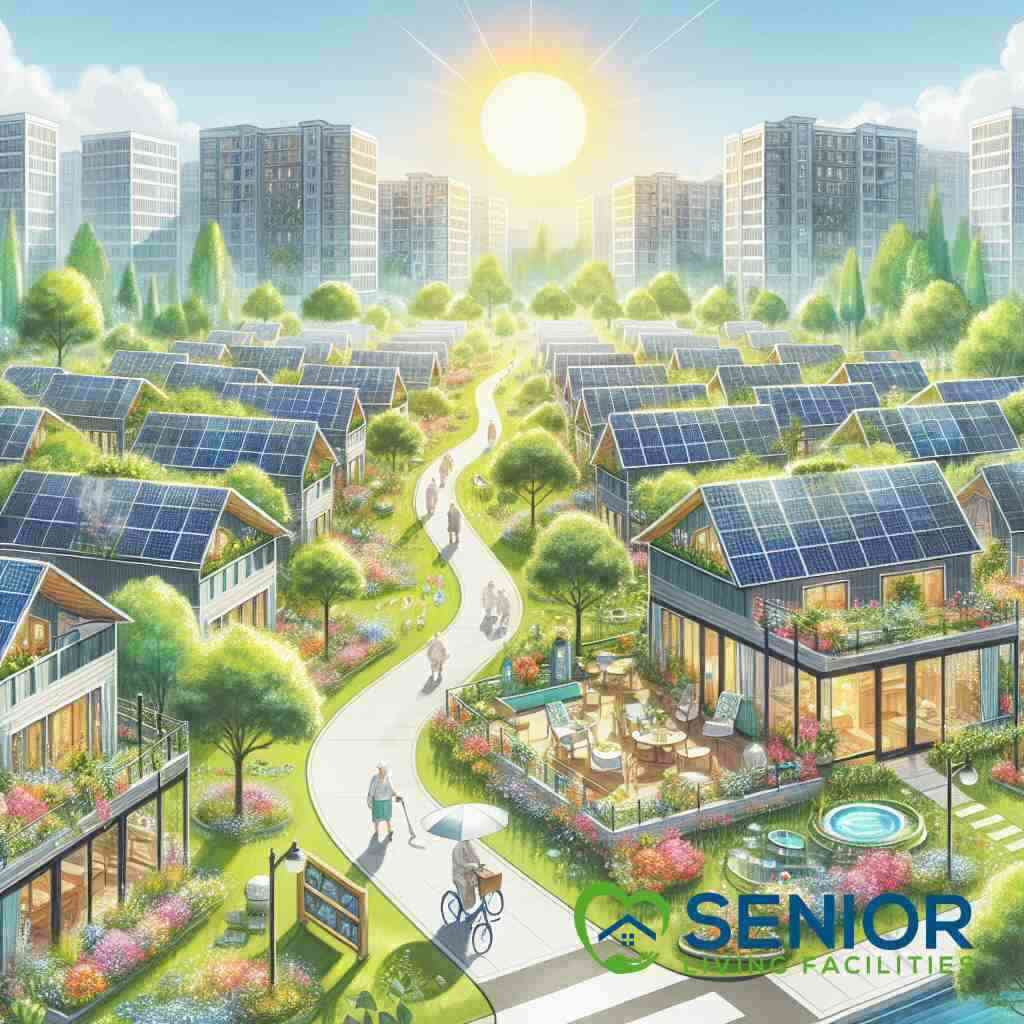
Senior Living Facilities: Future Trends for 2025
March 1, 2025
Envisioning Senior Living 2025
The Evolving Landscape of Senior Living
As we approach 2025, the landscape of senior living is undergoing a transformative evolution. Driven by demographic shifts and technological advancements, senior living facilities are redefining the concept of elder care. Communities are moving beyond traditional models, incorporating innovations that provide not only independent senior living options but also comprehensive care tailored to individuals’ specific health needs. The integration of various care levels within a single community ensures a continuum of care, accommodating the changing requirements of seniors over time. Furthermore, the emphasis is shifting toward creating an environment that fosters active aging, promoting not just longevity but an enhanced quality of life.
Understanding the Aging Population Trends
Globally, the aging population is expanding at an unprecedented rate, presenting challenges and opportunities for senior living facilities. As the baby boomer generation continues to age, it is crucial to address their diverse requirements by offering a range of senior living options in safe, engaging communities. This trend necessitates a keen understanding of aging population dynamics, including healthcare demands and social needs. Tailoring environments that promote connectivity and well-being, these communities can serve as microcosms reflecting broader societal changes and customizing care to align with the preferences and expectations of modern seniors.
Role of Technology in Future Senior Care
Technology’s role in shaping future senior care cannot be overstated. In 2025, advancements are poised to make a significant impact on senior living facilities. From AI-driven health monitoring systems to smart home features that facilitate aging in place, technology enhances safety and convenience. Emerging tools such as wearable devices provide real-time health data, aiding in proactive care planning. The impact of AI in elder care extends beyond health monitoring; it includes cognitive aids and personalized virtual companions that enrich seniors’ daily lives. Moreover, telehealth platforms expand access to medical professionals, reducing geographical barriers and making healthcare more accessible to seniors across diverse settings.
Innovative Senior Housing Solutions
Smart Homes and Aging in Place Innovations
As society advances towards 2025, the concept of aging in place is becoming increasingly critical. Innovatively designed smart homes offer seniors a way to maintain their independence and enjoy comfort and security. These homes integrate advanced technologies such as voice-activated assistants, automated lighting, and energy-efficient systems to enhance daily living. In particular, smart homes are designed to mitigate the challenges posed by physical limitations, with features like remote-controlled appliances and fall detection systems. As demand for such housing grows, senior living facilities are adopting these innovations to ensure that aging in place remains a viable and attractive option for seniors living in dynamic environments like senior living facilities in Arizona.
Seniors benefit greatly from environments equipped with personalized digital solutions that adapt to their evolving needs. These technologies not only increase safety but also enhance the quality of life by simplifying activities of daily living in seniors, from automatic medication dispensers to smart kitchen gadgets; smart home technologies address unique challenges by providing seamless day-to-day support. Moreover, the advent of Internet of Things (IoT) devices allows caregivers to monitor these environments remotely, offering peace of mind for family members and ensuring prompt intervention, enhancing both safety and connectivity among seniors.
Eco-Friendly and Sustainable Senior Communities
The push for sustainability in senior living communities is more than just a trend; it’s an essential shift toward responsible elder care. Eco-friendly senior living options focus on reducing environmental impact while promoting a healthier lifestyle for residents. Incorporating green building materials, renewable energy sources, and sustainable practices, these communities ensure that they are not only reducing their carbon footprint but also providing environments that are nurturing and healthy. The demand for eco-friendly senior living is driving innovation within retirement neighborhoods, making them a sought-after choice for environmentally conscious seniors.
Many communities are now embedding nature into their infrastructure, creating green spaces that promote tranquility and mental well-being. The integration of walkable paths through lush landscapes and access to organic gardens enhances the living experience for seniors. These thoughtful community designs not only foster physical well-being but also encourage social interaction and a sense of belonging among residents. Sustainable living principles are becoming foundational to the development of senior housing, ensuring long-term viability and attractiveness to future generations of seniors who value ecological responsibility.
Future-Proofing Elder Care with Personalized Plans
In the dynamic landscape of senior living, future-proofing elder care involves creating adaptive and personalized care plans that cater to individual needs. Understanding that each senior has unique preferences and health requirements is paramount for creating effective long-term solutions. This personalized approach ensures that care plans can evolve alongside residents, accommodating changes in mobility, cognition, and overall health. Facilities are increasingly turning to data-driven insights and innovation in senior living facilities to tailor their offerings to meet these diverse demands.
Personalized care plans require a comprehensive approach, integrating various elements such as medical care, dietary preferences, and activities that align with individual interests and abilities, as explored in How to Maximize Daily Wellbeing in Senior Living Facilities. Additionally, predictive analytics enable proactive adjustments to care plans, ensuring that seniors’ needs are continuously met. By focusing on creating holistic and adaptable care strategies, senior communities ensure residents experience a supportive, enriched environment that promotes longevity and fulfillment. This commitment to future-proofing elder care positions senior living facilities to effectively address the challenges and opportunities presented by rapid demographic changes in the years ahead.
Emerging Technologies in Elder Care
AI and Robotics in Senior Living Facilities
Artificial intelligence and robotics are revolutionizing the landscape of elder care by introducing innovative solutions tailored to senior needs. Senior living facilities are increasingly incorporating AI-driven systems to enhance residents’ safety and well-being. These technologies provide real-time health monitoring, enabling caregivers to anticipate medical issues before they escalate. In addition, robotic assistance is becoming commonplace, helping seniors with daily tasks such as medication management and mobility. These advancements allow seniors to enjoy greater independence while ensuring their health is meticulously monitored.
The introduction of AI in senior living facilities also extends to enriching social interactions. Virtual companions, powered by AI, offer seniors personalized engagement, alleviating loneliness and providing cognitive stimulation. Meanwhile, robotics in these communities assist not only with routine chores but also act as guides for residents, promoting a seamless blend of care and autonomy. As we move towards 2025, these technologies promise to redefine the paradigm of elder care, making facilities smarter and more responsive to individualized needs.
Telehealth and Virtual Reality for Aging Adults
Telehealth services have become a cornerstone in modern senior care, particularly in bridging the gap between accessible healthcare and distance. These platforms enable seniors to consult with healthcare professionals without leaving their community, thereby eliminating geographical barriers. Telehealth’s role in elder care enhances the availability of specialized medical advice, allowing for timely interventions and customized treatment plans. As senior communities embrace this modality, access to quality care becomes more efficient and patient-centered.
Virtual reality (VR) offers another dimension to senior living by providing experiences that enrich daily life and promote emotional well-being. VR applications offer seniors the opportunity to explore new worlds, partake in cultural activities, or engage in fitness routines safely. This technology fosters social connectivity and mental stimulation, proving particularly beneficial for those facing mobility restrictions. As these digital innovations gain traction, they’ve become pivotal in transforming senior living facilities into dynamic environments conducive to physical and psychological health.
Advanced Geriatric Healthcare Solutions
Advanced geriatric healthcare solutions are poised to reshape how elder care is orchestrated in senior living communities. Emphasizing preventive care and early intervention, these solutions leverage cutting-edge technology to enhance diagnostic precision and personalized treatments. One avenue is through wearable devices that continuously track vital signs, offering invaluable data for tailored healthcare regimens. This proactive approach shifts the focus from treating illness to maintaining health, a pivotal evolution for future senior care.
Moreover, integrating technology in senior healthcare extends to the implementation of smart systems that manage chronic conditions efficiently. By facilitating real-time communication between medical professionals and seniors, these solutions ensure that care is both immediate and tailored. The evolution of geriatric healthcare reflects a broader commitment to adopting future healthcare solutions for seniors that prioritize quality, accessibility, and sustainability. These innovations represent a significant leap forward in constructing resilient and responsive elder care ecosystems.
Holistic and Wellness-Centric Senior Living
Wellness Programs and Senior Lifestyle Enhancements
In the evolving landscape of senior living, the emphasis on wellness programs and lifestyle enhancements is crucial in ensuring a thriving environment for aging adults. These programs are designed to promote physical, mental, and emotional well-being, catering to the diverse needs of seniors. Facilities are increasingly offering fitness classes, meditation sessions, and nutrition workshops tailored to enhance seniors’ overall health. By integrating these dynamic activities, communities foster a proactive approach towards longevity and quality of life, steering away from conventional elder care paradigms.
Moreover, wellness programs are becoming more personalized, recognizing that each senior has unique health goals and preferences. Facilities are utilizing data-driven insights to craft individualized wellness plans that include exercise regimens, dietary modifications, and mental health support. This personalized approach not only boosts residents’ engagement but also empowers them to take charge of their health, ultimately leading to more vibrant and fulfilling lives. By prioritizing wellness, senior living facilities position themselves as forward-thinking leaders in senior living facilities in Alabama.
Socially Connected Elder Care Environments
Creating socially connected environments is pivotal in modern elder care, as it promotes a sense of belonging and combats the isolation often experienced by seniors. Senior living communities employ various strategies to encourage social interaction among residents. With common areas designed for interaction, such as bustling community centers and tranquil garden spaces, these facilities foster an ambiance conducive to relationship building. These areas serve as vibrant hubs where residents can engage in group activities, sharing experiences that enrich their daily lives.
Technological innovations such as virtual communities and digital platforms also play an instrumental role in enhancing social connectivity. These tools facilitate virtual gatherings and interactive sessions, enabling seniors to maintain connections with friends and family regardless of physical distance. By bridging the gap between physical and digital interactions, senior communities ensure that residents remain engaged and connected, thus enhancing their overall well-being. By nurturing these socially connected environments, communities for seniors 55+ create inclusive and supportive settings where seniors can thrive.
Preventive Care and Healthier Aging Communities
Preventive care is a cornerstone of healthier aging communities, focused on early detection and intervention to forestall health complications. By adopting a proactive approach, senior living facilities aim to mitigate health risks and enhance residents’ quality of life. Routine screenings, vaccinations, and health assessments are integral components of preventive care programs. These measures not only help identify potential health issues early but also enable timely medical responses, reducing the likelihood of more severe conditions, as discussed in What Are Essential Daily Activities in Senior Living?
In addition to medical interventions, facilities are incorporating educational workshops that promote wellness and preventive healthcare for seniors. By informing residents about healthy lifestyles and disease prevention, these communities empower seniors to make informed decisions about their well-being. Nutritional guidance and stress management workshops are also standard offerings that contribute to healthier lifestyles. This commitment to preventive care epitomizes the future of senior living, where the emphasis on maintaining health precludes the need for extensive medical interventions, ensuring vibrant and resilient communities for years to come.
Conclusion
Navigating the Future of Senior Living
As we navigate the future of senior living, the focus is on adapting to the evolving landscape that prioritizes both innovation and empathy. The senior living trends in 2025 paint a picture of communities that are not just technologically advanced but also attuned to the emotional and social needs of their residents. Facilities are redefining traditional concepts by integrating cutting-edge technologies like AI and smart home innovations with a core commitment to well-being. This balanced approach ensures that seniors not only live longer but also thrive in enriching environments that foster a sense of belonging and purpose.
In this forward-thinking era, technologies such as telehealth and virtual reality are becoming indispensable tools. They bridge the gap between physical limitations and mental stimulation, opening new vistas of opportunities for engagement and care. Building upon these advancements, communities can incorporate future healthcare solutions for seniors that emphasize accessibility and personalized care. By adopting a holistic perspective, senior living facilities are well-equipped to navigate the challenges and embrace the opportunities that lie ahead, ensuring a vibrant future for their residents.
Building a Foundation for Tomorrow’s Elder Care
Laying the foundation for tomorrow’s elder care involves a commitment to sustainability, innovation, and personalization. By prioritizing sustainable practices, communities can create eco-friendly assisted living spaces that respect both residents’ well-being and environmental stewardship. Adapting to future elder care designs means embracing green technologies and building practices that are both smart and sustainable, providing seniors with environments that nurture health and happiness.
Furthermore, building a sustainable foundation demands a focus on the social fabric of these communities. Creating socially connected environments fosters engagement and makes residents feel valued and connected. This holistic approach is pivotal in crafting an enduring vision for senior living, one where every resident experiences dignity, empowerment, and joy. Senior living facilities must aim for future-proofing solutions that are adaptable and resilient, meeting the ever-changing needs of an aging population while setting the standard for what elder care can achieve.
By aligning with these principles, senior living facilities are not just responding to current trends but actively shaping the future of elder care. This proactive stance ensures that facilities remain at the forefront of the industry, offering innovative senior housing solutions that reflect a commitment to excellence and compassion. By doing so, these communities can effectively support the growing demand for diverse senior living options in California and beyond, ensuring a comprehensive and dynamic approach to elder care.
Frequently Asked Questions
Question: What role do AI and other elder care technology play in the future of senior care, according to the Senior Living Facilities: Future Trends for 2025 blog?
Answer: AI and elder care technology are pivotal in reshaping the future of senior care. Senior Living Facilities highlights the increasing role of AI-driven health monitoring systems in promoting safety and enabling proactive care planning. These technologies, including smart home features and wearable devices, are integral in fostering independence while ensuring comprehensive monitoring of seniors’ well-being, as outlined in Exploring the Intersection of Technology and Senior Care. The blog underscores the transformative impact of AI and robotics in enhancing both the health and lifestyle of residents in senior living communities. By integrating these technologies, facilities can provide innovative senior housing solutions that are adaptive to the unique needs of aging populations.
Question: How do Senior Living Facilities address the concept of aging in place in their communities?
Answer: Senior Living Facilities emphasize the importance of aging-in-place innovations as a key component of their senior housing options. The integration of smart home technologies, such as voice-activated assistants, automated lighting, and energy-efficient systems, allows seniors to maintain their independence while ensuring safety and comfort. These features are designed to overcome physical challenges and enhance daily living, making aging in place a viable option. By embracing elder-friendly community planning, the facilities aim to provide a seamless living experience where seniors can thrive in familiar and supportive environments, thus promoting a dignified and fulfilling lifestyle for all residents.
Question: What sustainable practices are incorporated into Senior Living Facilities, and how do they contribute to eco-friendly assisted living communities?
Answer: Senior Living Facilities are dedicated to implementing sustainable practices in their communities and promoting eco-friendly assisted living options that align with modern environmental standards. By incorporating green building materials and renewable energy solutions, these communities significantly reduce their environmental impact. The presence of green spaces, organic gardens, and walkable paths not only enriches the living experience but also fosters a connection with nature, enhancing mental and physical well-being. Senior Living Facilities’ commitment to sustainability ensures that they provide responsible elder care that resonates with environmentally conscious seniors, fostering communities that value both ecological stewardship and resident health.
Question: In what ways do Senior Living Facilities ensure that wellness programs are personalized and enhance seniors’ lifestyles?
Answer: Senior Living Facilities places significant emphasis on wellness programs that are tailored to individual health goals and preferences. The blog highlights the use of data-driven insights to craft personalized wellness plans, which include fitness classes, meditation sessions, and nutrition workshops. By focusing on individualized care plans, facilities encourage seniors to take charge of their health, thereby enhancing their lifestyle. These programs are designed to be dynamic, engaging residents in activities that support their physical, mental, and emotional health. This personalized approach empowers seniors, leading to a vibrant and fulfilling life within the community.
Question: How does the Senior Living Facilities platform assist in finding suitable senior living options, and what makes it stand out from other elder care services?
Answer: The Senior Living Facilities platform is a comprehensive tool designed to assist families and individuals in finding suitable senior living options across all 50 states in the U.S. The platform offers a user-friendly interface that allows users to search for communities by location, compare facilities based on care levels, activities, and medical services, and connect directly with potential communities or with their expert team for personalized guidance. What sets Senior Living Facilities apart is their expansive database and commitment to tailoring solutions that meet the unique needs of each senior, ensuring a sense of social connection and well-being within their chosen community. This personalized service approach and extensive reach make it a trusted partner in senior living solutions.
